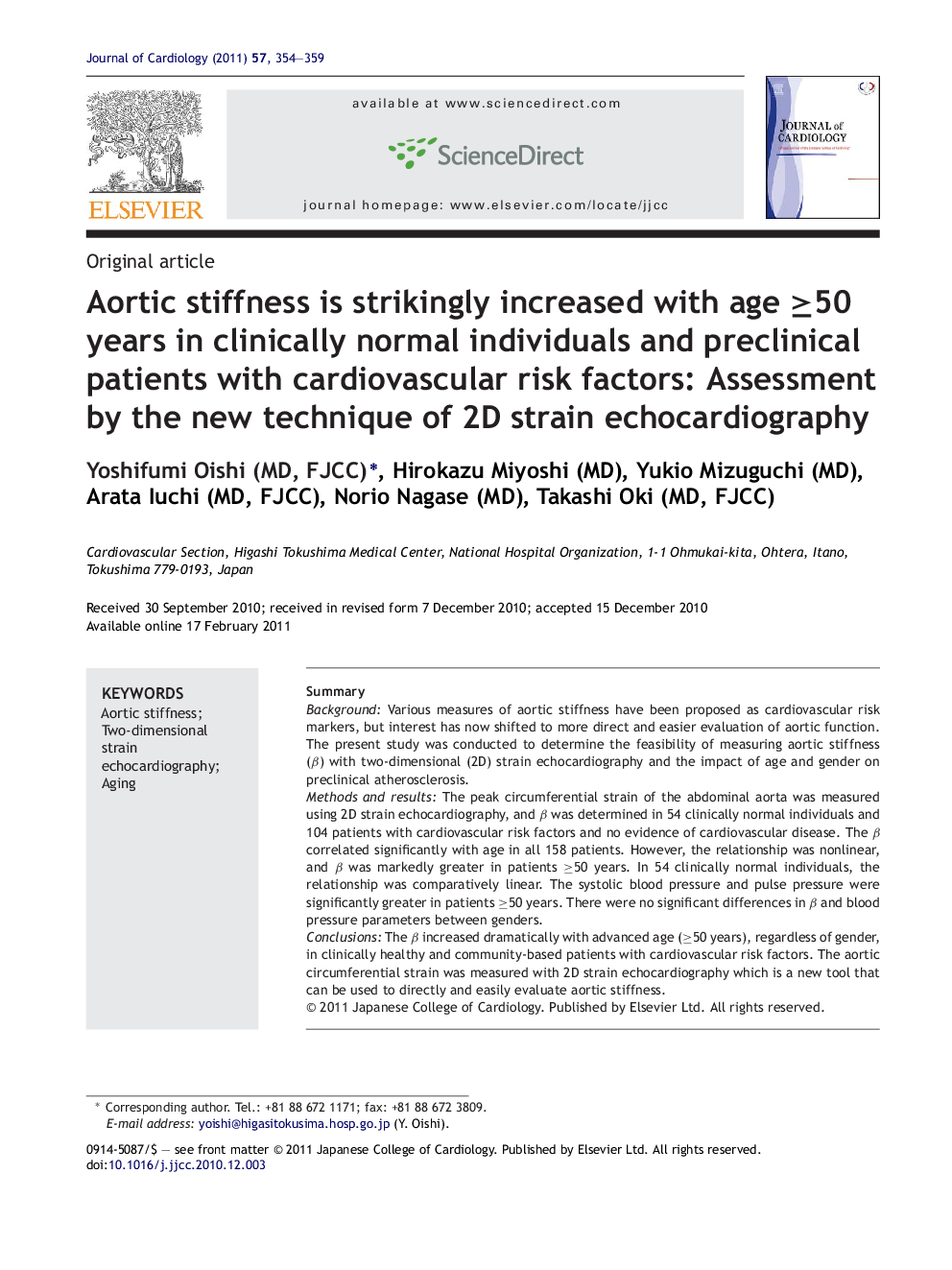| Article ID | Journal | Published Year | Pages | File Type |
|---|---|---|---|---|
| 2963267 | Journal of Cardiology | 2011 | 6 Pages |
SummaryBackgroundVarious measures of aortic stiffness have been proposed as cardiovascular risk markers, but interest has now shifted to more direct and easier evaluation of aortic function. The present study was conducted to determine the feasibility of measuring aortic stiffness (β) with two-dimensional (2D) strain echocardiography and the impact of age and gender on preclinical atherosclerosis.Methods and resultsThe peak circumferential strain of the abdominal aorta was measured using 2D strain echocardiography, and β was determined in 54 clinically normal individuals and 104 patients with cardiovascular risk factors and no evidence of cardiovascular disease. The β correlated significantly with age in all 158 patients. However, the relationship was nonlinear, and β was markedly greater in patients ≥50 years. In 54 clinically normal individuals, the relationship was comparatively linear. The systolic blood pressure and pulse pressure were significantly greater in patients ≥50 years. There were no significant differences in β and blood pressure parameters between genders.ConclusionsThe β increased dramatically with advanced age (≥50 years), regardless of gender, in clinically healthy and community-based patients with cardiovascular risk factors. The aortic circumferential strain was measured with 2D strain echocardiography which is a new tool that can be used to directly and easily evaluate aortic stiffness.
